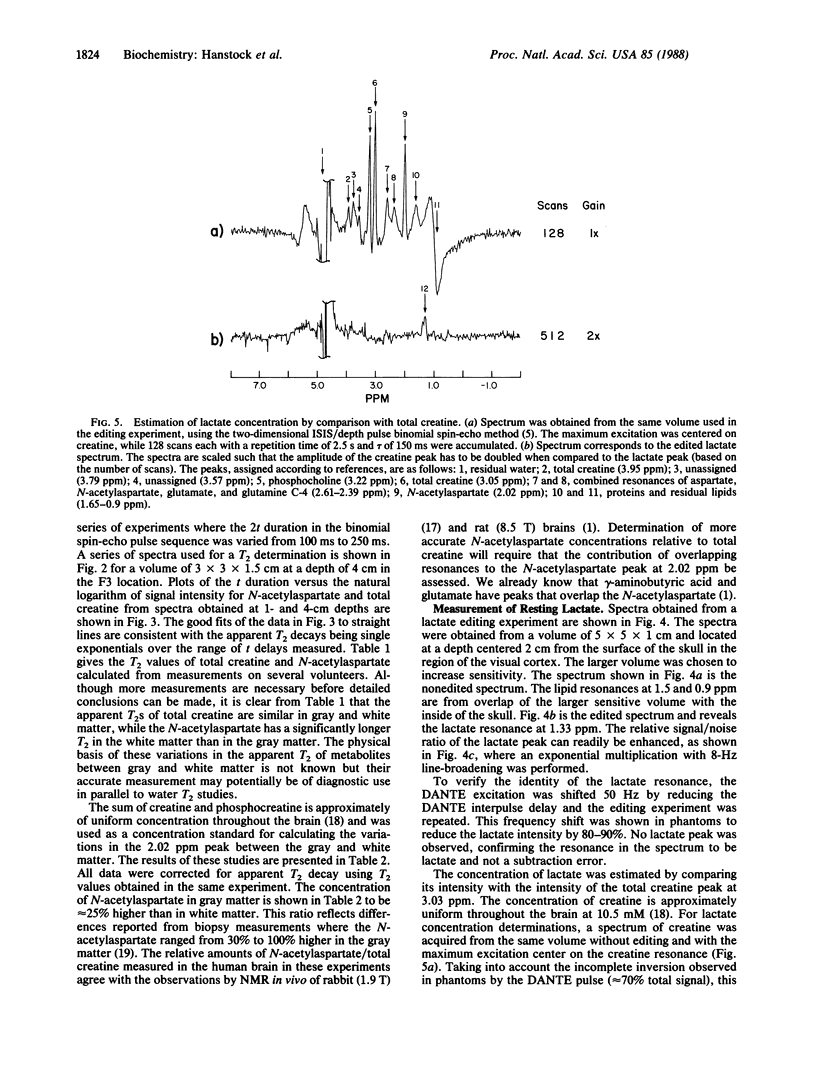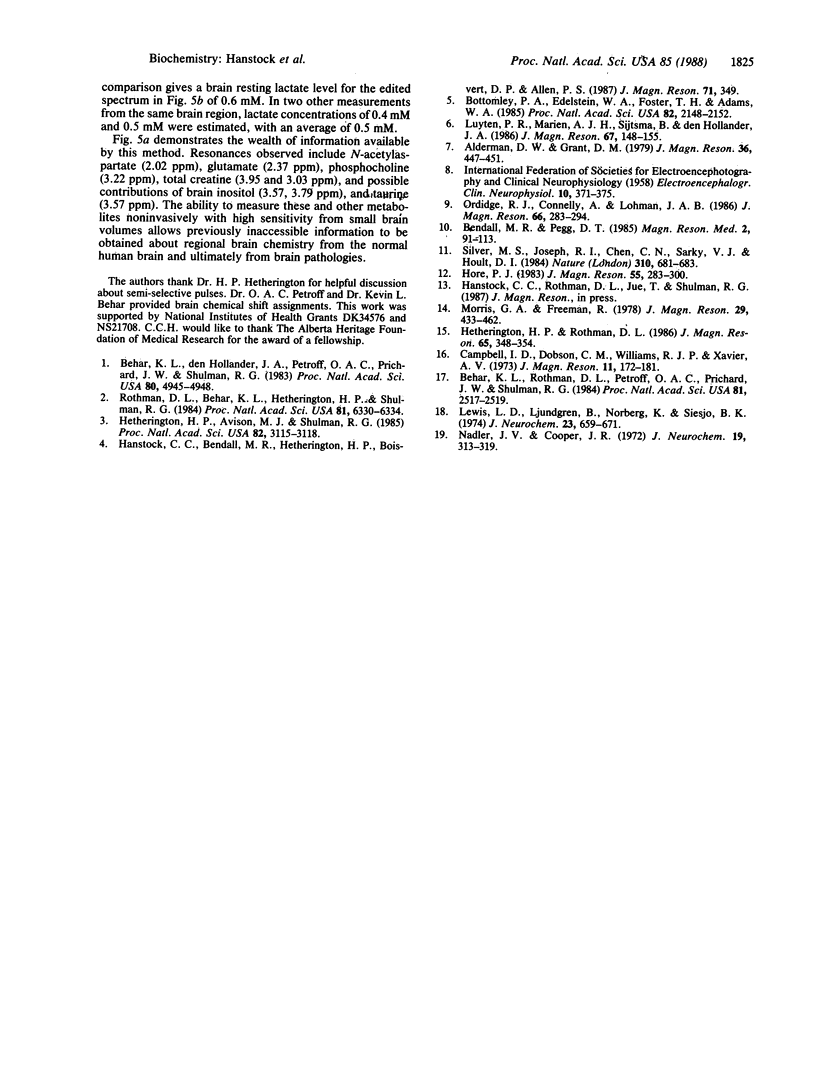Abstract
Using a surface coil, we have obtained 1H NMR spectra from metabolites in the human brain. Localization was achieved by combining depth pulses with image-selected in vivo spectroscopy magnetic field gradient methods. 1H spectra in which total creatine (3.03 ppm) has a signal/noise ratio of 95:1 were obtained in 4 min from 14 ml of brain. A resonance at 2.02 ppm consisting predominantly of N-acetylaspartate was measured relative to the creatine peak in gray and white matter, and the ratio was lower in the white matter. The spin-spin relaxation times of N-acetylaspartate and creatine were measured in white and gray matter and while creatine relaxation times were the same in both, the N-acetylaspartate relaxation time was longer in white matter. Lactate was detected in the normoxic brain and the average of three measurements was approximately equal to 0.5 mM from comparison with the creatine plus phosphocreatine peak, which was assumed to be 10.5 mM.
Full text
PDF




Selected References
These references are in PubMed. This may not be the complete list of references from this article.
- Behar K. L., Rothman D. L., Shulman R. G., Petroff O. A., Prichard J. W. Detection of cerebral lactate in vivo during hypoxemia by 1H NMR at relatively low field strengths (1.9 T). Proc Natl Acad Sci U S A. 1984 Apr;81(8):2517–2519. doi: 10.1073/pnas.81.8.2517. [DOI] [PMC free article] [PubMed] [Google Scholar]
- Behar K. L., den Hollander J. A., Stromski M. E., Ogino T., Shulman R. G., Petroff O. A., Prichard J. W. High-resolution 1H nuclear magnetic resonance study of cerebral hypoxia in vivo. Proc Natl Acad Sci U S A. 1983 Aug;80(16):4945–4948. doi: 10.1073/pnas.80.16.4945. [DOI] [PMC free article] [PubMed] [Google Scholar]
- Bendall M. R., Pegg D. T. Theoretical description of depth pulse sequences, on and off resonance, including improvements and extensions thereof. Magn Reson Med. 1985 Apr;2(2):91–113. doi: 10.1002/mrm.1910020202. [DOI] [PubMed] [Google Scholar]
- Bottomley P. A., Edelstein W. A., Foster T. H., Adams W. A. In vivo solvent-suppressed localized hydrogen nuclear magnetic resonance spectroscopy: a window to metabolism? Proc Natl Acad Sci U S A. 1985 Apr;82(7):2148–2152. doi: 10.1073/pnas.82.7.2148. [DOI] [PMC free article] [PubMed] [Google Scholar]
- Hetherington H. P., Avison M. J., Shulman R. G. 1H homonuclear editing of rat brain using semiselective pulses. Proc Natl Acad Sci U S A. 1985 May;82(10):3115–3118. doi: 10.1073/pnas.82.10.3115. [DOI] [PMC free article] [PubMed] [Google Scholar]
- Lewis L. D., Ljunggren B., Norberg K., Siesjö B. K. Changes in carbohydrate substrates, amino acids and ammonia in the brain during insulin-induced hypoglycemia. J Neurochem. 1974 Oct;23(4):659–671. doi: 10.1111/j.1471-4159.1974.tb04389.x. [DOI] [PubMed] [Google Scholar]
- Nadler J. V., Cooper J. R. N-acetyl-L-aspartic acid content of human neural tumours and bovine peripheral nervous tissues. J Neurochem. 1972 Feb;19(2):313–319. doi: 10.1111/j.1471-4159.1972.tb01341.x. [DOI] [PubMed] [Google Scholar]
- Rothman D. L., Behar K. L., Hetherington H. P., Shulman R. G. Homonuclear 1H double-resonance difference spectroscopy of the rat brain in vivo. Proc Natl Acad Sci U S A. 1984 Oct;81(20):6330–6334. doi: 10.1073/pnas.81.20.6330. [DOI] [PMC free article] [PubMed] [Google Scholar]
- Silver M. S., Joseph R. I., Chen C. N., Sank V. J., Hoult D. I. Selective population inversion in NMR. Nature. 1984 Aug 23;310(5979):681–683. doi: 10.1038/310681a0. [DOI] [PubMed] [Google Scholar]


